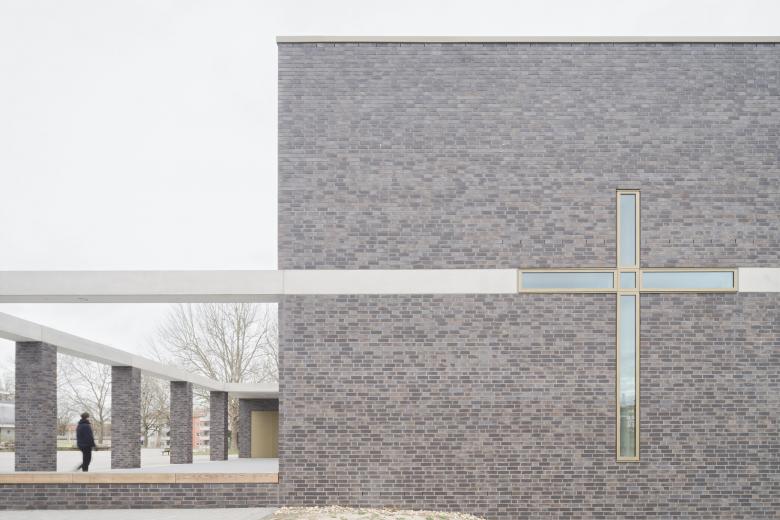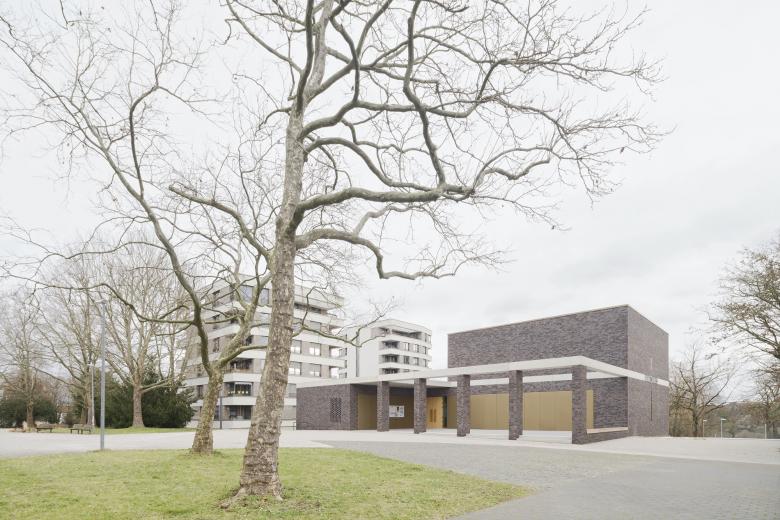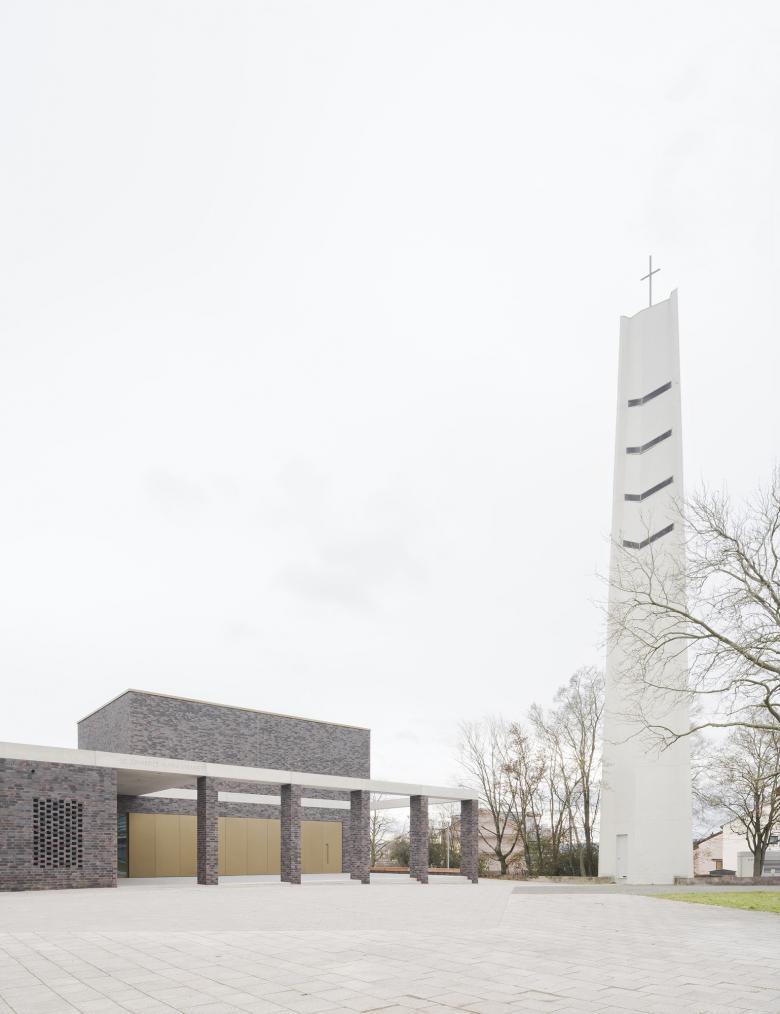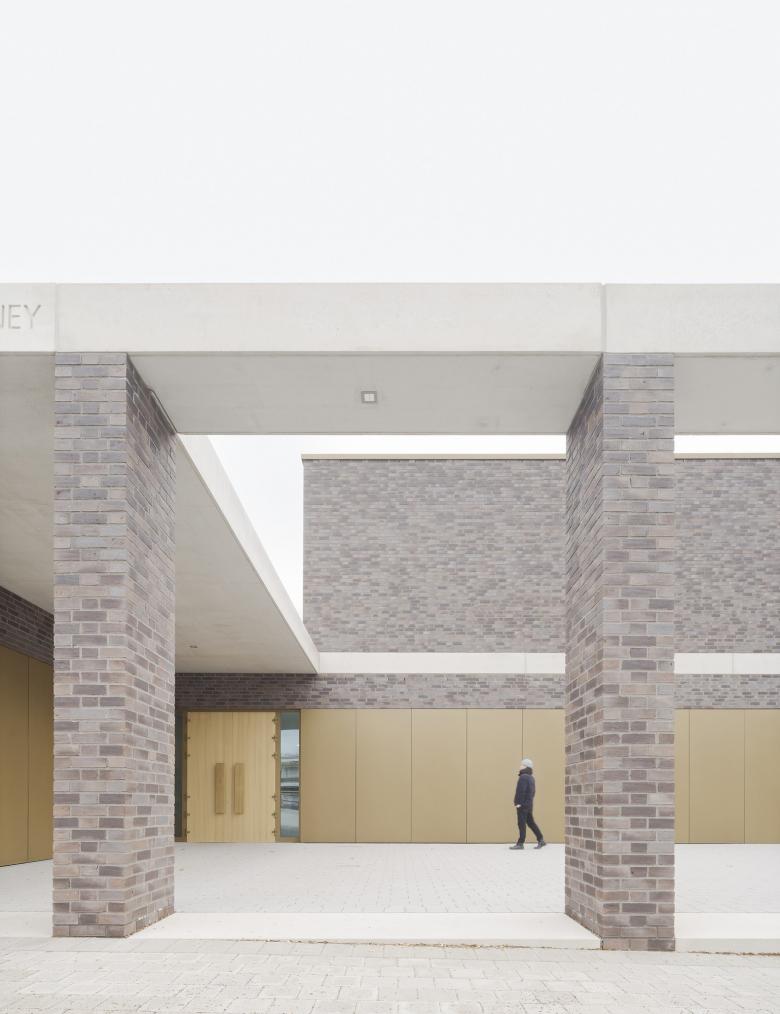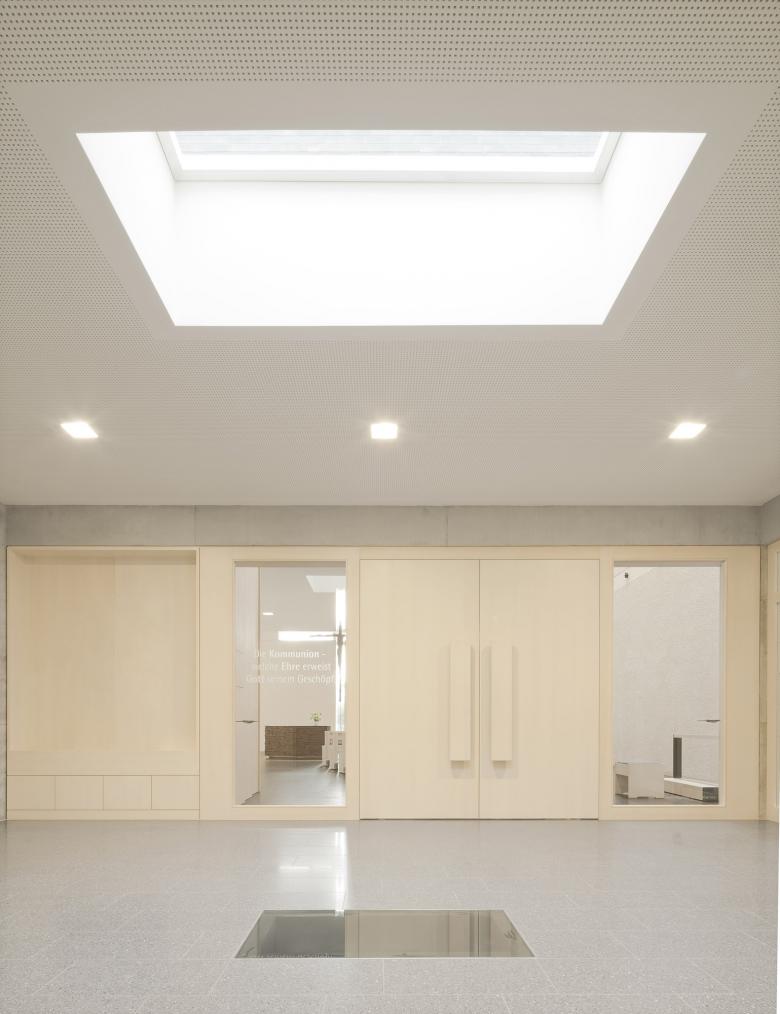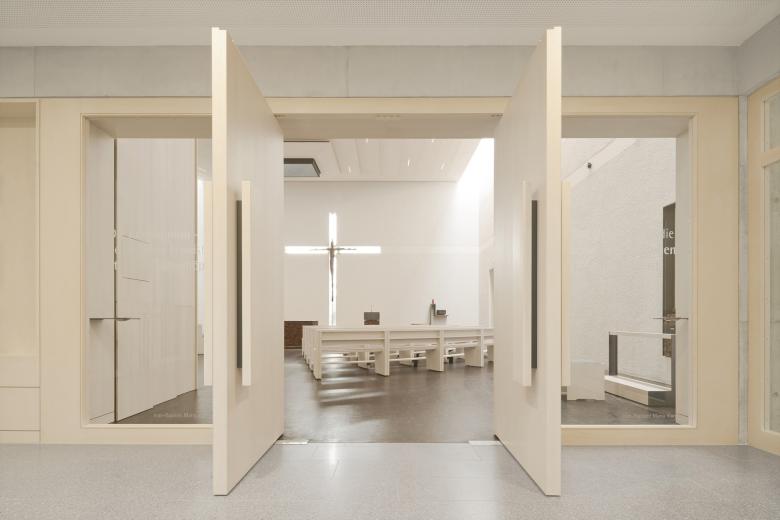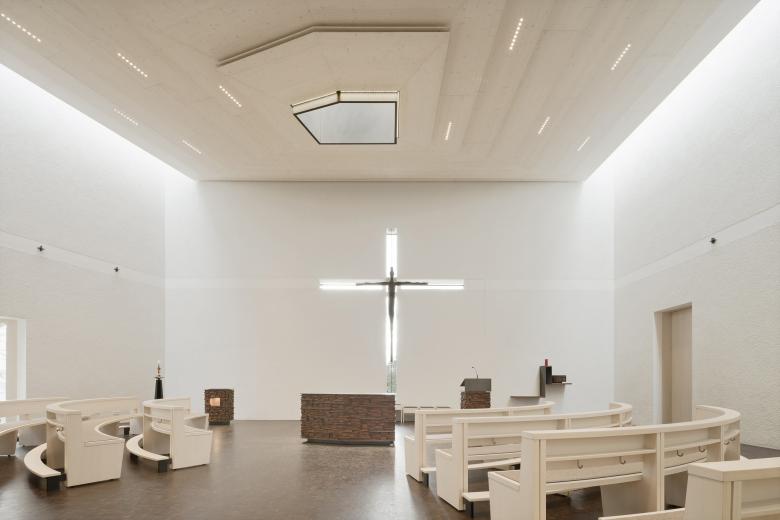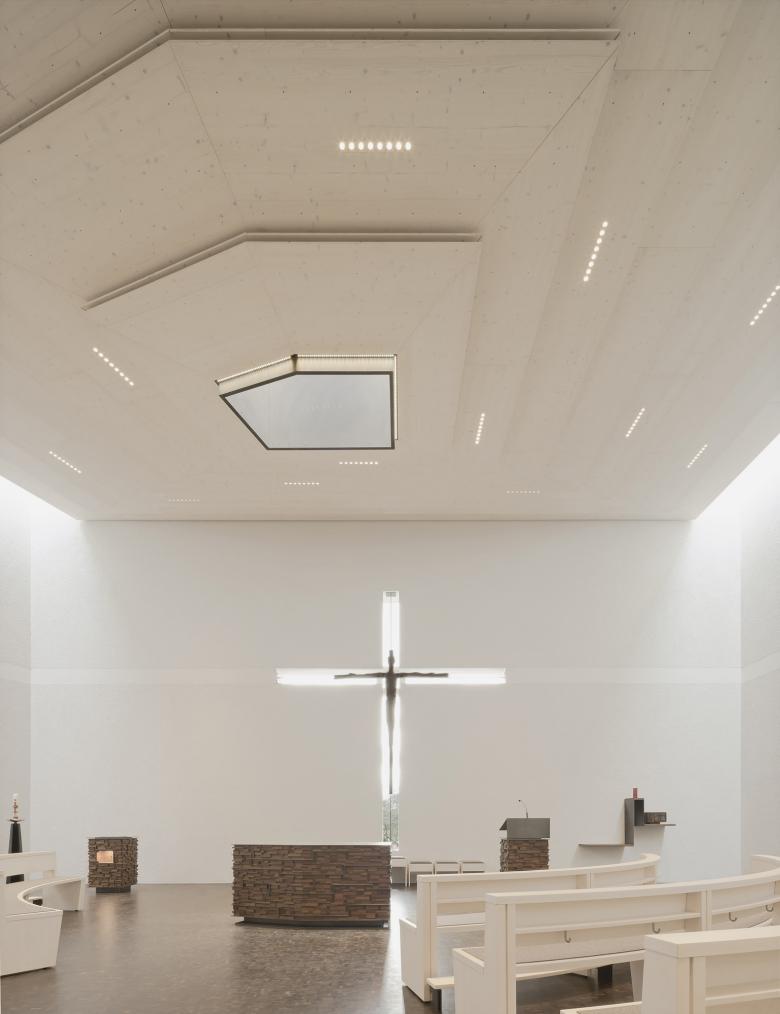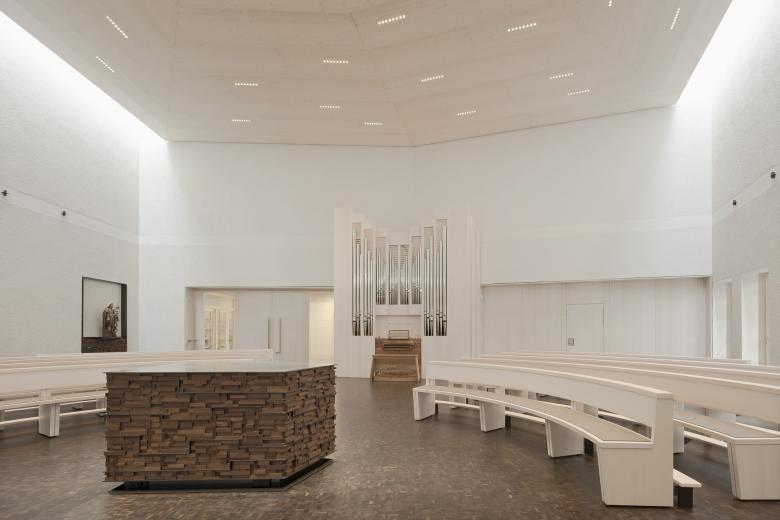St. Johannes Maria Vianney Neighbourhood Development
Suttgart, Germany
The existing St. Johannes Maria Vianney community centre in Stuttgart-Mönchfeld requires significant investment and no longer meets the current requirements. The goal is to develop the site in a way that fosters a vibrant community life, combining church activities, a childcare facility and new housing for older people in connection with the neighbouring St. Ulrich care facility. To achieve this, it is necessary to demolish the existing buildings and divide the plot. The existing bell tower will be preserved. In collaboration between the Catholic City Deanery of Stuttgart and the Caritas Gemeinschafts-Stiftung, a new church building and three residential buildings with an integrated health centre, communal space and a kindergarten are constructed.
Stuttgart-Mönchfeld is located in the north of the Baden-Württemberg state capital, atop a hill overlooking vineyards and the Neckar River down in the valley. The district was built in the 1950s and 1960s, with the intention to provide primarily social housing. The Catholic Church of St. Johannes Maria Vianney, complete with parish hall, including flats and daycare centre, and a rectory, also dates from this period. Over the decades, however, substantial deferred maintenance investments had accumulated on the parish buildings, rendering them inadequate for actual requirements. In addition, the “Stuttgarter Madonna” parish, which includes St. Johannes Maria Vianney, is confronted with demographic change and religious developments in society, as are many other parishes. This is accompanied by a loss of members alongside a desire for more social engagement, such as in childcare or in nursing. On the one hand, the existing church building with over 400 seats was far too large for the current congregation, and on the other hand, the existing kindergarten no longer met the constantly growing demand for childcare places.
Church process “Aufbrechen” (Setting Out)
Back in 2011, the Catholic Church in Stuttgart had initiated the pastoral development process “Aufbrechen – Katholische Kirche in Stuttgart” (Setting out – Catholic Church in Stuttgart) aiming to position itself well for the future. As a result, many parishes reduced their buildings and explored alternative usage and cooperation models. At St. Johannes Maria Vianney, the decision was made to replace the existing church and parish buildings with new buildings — retaining only the bell tower, which had been moved away from the church itself, as an identity-forming landmark. The new, much more intimate church, with its 110 seats, is tailored to the current parish life.
The freed-up site area was also used to build three slender residential towers, which provide a much larger children’s daycare centre with four groups, 64 senior-friendly and mostly barrier-free flats and a Caritas station including a base for outpatient nursing services.
A new church is emerging
In 2017, our office won first place in a competition for the architecture of the new church building, the residential development and the neighbourhood design. Following the demolition work, new construction work commenced in 2020 according to our plans. The heart of the new green and car-free area is a re-designed neighbourhood square, around which the church and the other new buildings are arranged. We finished the cubic, two-storey new church with its single-storey extension, containing a pastoral office, community rooms and hall, with a dark facing brick façade. This colour scheme emphasises the church’s special role in the neighbourhood structure. A pergola in front, made of fair-faced concrete and brick-faced supports, frames the church square. The fair-faced concrete band continues as a parapet on the extension, precisely dividing the church cube in half.
A glass cross is inserted into the southwest façade, the horizontal line of which replaces the concrete band at this point. This “window cross” simultaneously serves as the shining altar crucifix in the interior. We designed the interior to be bright, with white rough plaster on the walls and a white-glazed, stepped wooden ceiling leading to the altar. Only the dark end grain wood block flooring creates a significant contrast. The very deliberate use and control of daylight, with lateral skylights, a skylight directly above the altar and the window cross, enhances the sacred character of the new church.
Traces of the old church
We also designed the liturgical elements in the church, such as the altar, ambo, baptismal font, tabernacle, credence table, eternal light, and altar of Mary. For the first time in the history of the Diocese of Rottenburg-Stuttgart, architects won the art competition held for this purpose. The transformation from old to new was one of our core themes for both the architectural and the art competition. Therefore, in the liturgical areas, black steel plates hold layers of wood obtained from the old church pews of the predecessor building. Additional traces of the old church can be found throughout the new one. The statue of the Virgin Mary and the crucifix were integrated into the new church hall, while the organ was purchased second-hand from a Bavarian parish and adapted for St. Johannes Maria Vianney.
We were also able to implement a very special detail in the church: The foundation stone is located under a glass floor in the foyer. The illuminated showcase in the floor contains parts of the old church’s foundation stone, a church made of Lego bricks, Stuttgart’s emblem (a horse), coins and a newspaper from the day of the cornerstone ceremony.
Attractive residential development
We designed the façades of the three residential towers – including a children’s daycare facility and social centre – using brick slips and plaster bands. All 64 flats boast underfloor heating and barrier-free bathrooms. Some of the senior-friendly units are also wheelchair-accessible The Caritas Foundation Stuttgart, in collaboration with the Grötzinger Foundation, was the client for the residential towers and the daycare centre. The housing concept enables senior citizens to live in their own homes for as long as possible.
The buildings open up towards the Neckar Valley and are designed as permeable volumes. The new neighbourhood square is located in the centre. The flats on the top floors offer magnificent views of the vineyards, the lake Max-Eyth-See and the Neckar Valley.
